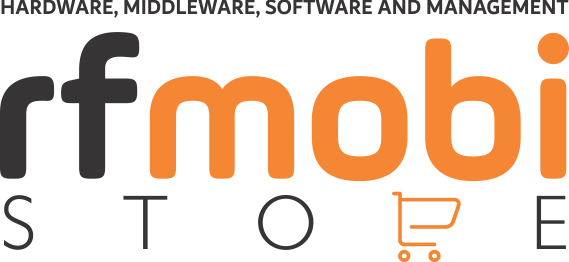RFID (Radio Frequency Identification) is an identification system that transmits data recorded on a microchip using electromagnetic waves (radio signals). In numerous applications in the information collection process, a digital RFID system recognizes data in real time without manual and visible human intervention, saving time, security, and effectiveness.
This technology can be used to identify, track, and manage things, papers, objects, people, and animals without the requirement for physical touch or a visual field. Its functionality has been tested in pilot projects all over the world, and it can be used in security, access, and traffic control in the public, pharmaceutical, medical-hospital, automobile, retail, airline, and other sectors.
In logistics chain management, RFID technology offers a wide range of applications. In addition to controlling material movement and storage across logistical operations, effective use of this technology aids in improving product quality, optimizing time, lowering costs associated with material distribution and movement, and improving services and customer service.
RFID technology's capability makes management easier and provides value to products and services. Employees can be more focused on activities that offer more value to the organization, which will have a direct influence on the company's performance through increased productivity and customer service.
RFID adaptability stores product data, sends humidity and temperature indicators, and, when paired with GPS, informs the precise location. The technique can reach heights of over 10 meters, depending on the environment. It can read and write data (which does not have to be static and in a straight line like a bar code), as well as capture radio frequency objects moving in non-uniform patterns. It may record a unique and non-changeable code for items and parts because the capture distance is longer than the optical reader.
RFID technology combined with temperature sensors, for example, allows for temperature reporting in brief time intervals. Software can monitor this data and provide alerts to keep track of patient situations in hospitals. Temperature monitoring is also beneficial in manufacturing and product distribution. It can be used in the food business to monitor the temperature of perishable products during distribution and delivery to ensure that they are in safe eating conditions.
The identification of baggage at airports is another fairly widespread application. The RFID tag attached to a customer's goods can be used to identify the owner of the luggage, as well as their flight and destination. This monitoring aids in the prevention of losses and delays, as well as improving safety and agility in the event of flight adjustments or redirections.
Applicability is used in the logistics business to improve process flexibility, intelligence, and security. In the logistics chain, the following are the key advantages of RFID technology: Manufacturing process optimization through automated receipt that is integrated with production planning and management without the need for alerts;
Production of customized products on assembly lines; Stock automation, control, and supply; Material inputs and outputs are automatically registered. Checking prices, missing items, refunds, and product expiration dates is optimized. Practicality in the conferencing of content that is out of sight;
Customer order delivery agility and the elimination of errors; Material movement and location time savings; Multiple tags can be captured quickly and simultaneously, eliminating the need to read barcodes one by one. Guarantee of product authenticity through the recording of a one-of-a-kind, non-alterable code; Product, person, animal, and object tracking; With recording and reading timestamps, RFID tag capture is guaranteed. Inventory products and materials require agility and a reduction in manpower.
RFID technology can provide a competitive advantage in business sustainability due to its extensive functionality and benefits, but it requires specific solutions in various situations, such as radio frequency band, range, interference, radio wave barriers, hardware and software compatibility, power sources, and standardized code structures. Some factors, such as obstructions in radio wave propagation and metals that affect capture distance, as well as liquids and the human body itself, can make it difficult to utilize. For the size and system compatibility required in worldwide chains and marketplaces, standardization of hardware and software, procedures, and information system structures is required.
To reap the many benefits of RFID technology, it is necessary to build a complete project that considers all of the processes involved, as well as to conduct a thorough test prior to putting the tags to the materials.












 USD
USD